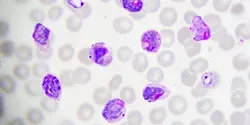Article

Combining chromosomes from different organisms started as soon as someone created a hybrid. “In natural breeding,” says geneticist Kulvinder S. Gill of Washington State University in Pullman, “we transfer genes through hybridization—transferring pollen from one plant to another.” He adds, “It can, for example, be pollen from wheat to rye or rye to wheat.”

Dr. Nathaniel Hentz is assistant director of the analytical lab at the Golden LEAF Biomanufacturing Training and Education Center (BTEC), where he develops bioanalytical assays in support of the various biomanufacturing processes taught at BTEC. Since 2008, Dr. Hentz has been responsible for developing and teaching undergraduate and graduate courses, industry short courses, and government (FDA and BARDA) training courses, with a focus on assay development and validation, quality control, and liquid-handling performance.

Harm Moes is technical support engineer at SGS in the Netherlands. Mr. Moes has 13 years of experience in analytical instrumentation and held several technical positions with an analytical instrument supplier before joining SGS. At SGS, he provides technical support to the SGS oil, gas, and chemical labs in the Netherlands. That includes implementation and validation of new instrumentation, techniques, and methods, and instruction and training of laboratory personnel.

Big data might bring more benefits to drug discovery than to any other field. For one thing, discovering a new drug turns out to be incredibly difficult. On average, a pharmaceutical company tries about 10,000 drug candidates for every one that ends up on the market. Plus, the process of discovering and developing a new drug costs hundreds of millions of dollars and takes more than a decade—some say more for both measurements.

















